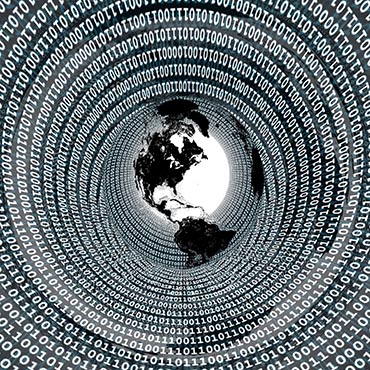Border Patrol finding new uses for data

Border security now means not only the basic metrics of apprehensions, but using that data to gauge and interdict looming threats.

The Border Patrol is coming to terms with how to use a data-driven approach to gauge security as data-collection tools become more widely deployed and collect more information at border hot spots.
The agency has taken on a holistic, risk-based approach, said Border Patrol Chief Michael Fisher, incorporating not only the basic metrics of apprehensions of illegal border crossers, but also how to use that data to gauge looming threats.
New technologies such as ground sensors, unmanned aerial drones and biometric identification capabilities produce data that has drastically altered the agency's approach to securing the border in the last few years, Fisher said during a Jan. 6 panel discussion at the Center for Strategic and International Studies.
A trilogy of a Border Patrol articles titled "Holding the Line in the 21st Century," written by Assistant Chief Robert Schroeder, laid out the strategic vision for border security. The articles show how data has been, and will continue to be, as important to the agency as the horses and vehicles its agents use every day.
The approach, said Schroeder, is to use data from a variety of sources to highlight the details of the "constant, ongoing battle" to secure the border, as well as to allocate the agency's assets most effectively.
In 2012, the agency released its 2012–2016 Border Patrol Strategic Plan that laid out the risk-based strategy that aims to shift to a resource-based model. Historically, the agency had gauged security on the number of illegal aliens apprehended, drugs seized, and resources deployed in a specific area. The new plan, according to the papers, doesn’t rely solely on those numbers. It characterizes a secure border as one of low risk, where there is a high probability of detection coupled with a high probability of interdiction.
As the plan has moved forward, the agency is digesting how to best use data garnered from a widening array of technologies, from database capabilities to aerostats hovering above border areas, according to Fisher. "Technology has given us new frontiers," he said.
Understanding how to combine and interpret the data has been key to understanding local security. For instance, biometric data gathered on first-time incursions in south Texas a few years ago, said Fisher, hinted it would become a hot zone in the future. "We looked at the data and got the idea of a potential surge," he said.
Data gathered at border checkpoints, apprehensions and other sources, said Schroeder, that show the everyday ins and outs of human smugglers' activities can also expose their underlying business plans. Knowing where smugglers are concentrating their efforts through data analysis combined with situational awareness, he said, can disrupt their larger business plan, rendering it profitless.


